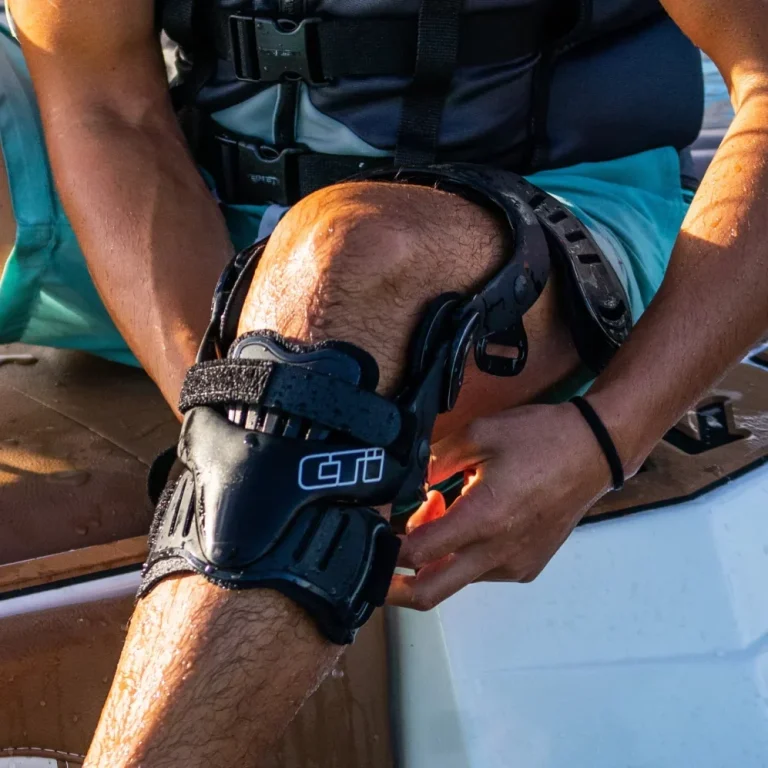
Knee bracing

Stability at the knee joint is achieved by a combination of muscle activity and the effects of soft tissue structures. Traumatic injuries to these structures, including the anterior cruciate ligament (ACL), posterior cruciate ligament (PCL), medial collateral ligament (MCL) and lateral collateral ligament (LCL) as well as the medial or lateral meniscus can result in knee instability and pain.
Specialist bracing can be used as part of conservative (non operative) treatment for ligament injury, including tears and ruptures and support tissue healing. Bracing options may also allow you to return to sport or other activities following injury or reconstructive surgery.
Following significant ligament injury, some people may be recommended to wear a brace during high impact activity. For example, some people may wear a brace when skiing, following ACL injury or reconstruction.
Recurrent patellar dislocation or subluxation as a result of injury or due to a connective tissue disorder such as hypermobile Ehlers Danlos Syndrome (hEDS) may also be improved by specialist bracing, as well as some cases of patellofemoral pain (PFP).
There is some evidence that certain of types of bracing may provide a prophylactic (protective) effect, which may be beneficial during sports which include cutting manoeuvres (quick changes of direction) or high energy impacts to the side of the knee.
The symptoms of knee osteoarthritis may be significantly improved by the use of an unloading knee brace. Learn more about bracing for osteoarthritis.
Get in touch to discuss how specialist bracing may help following a knee injury.

©Copyright. All rights reserved.
We need your consent to load the translations
We use a third-party service to translate the website content that may collect data about your activity. Please review the details in the privacy policy and accept the service to view the translations.
